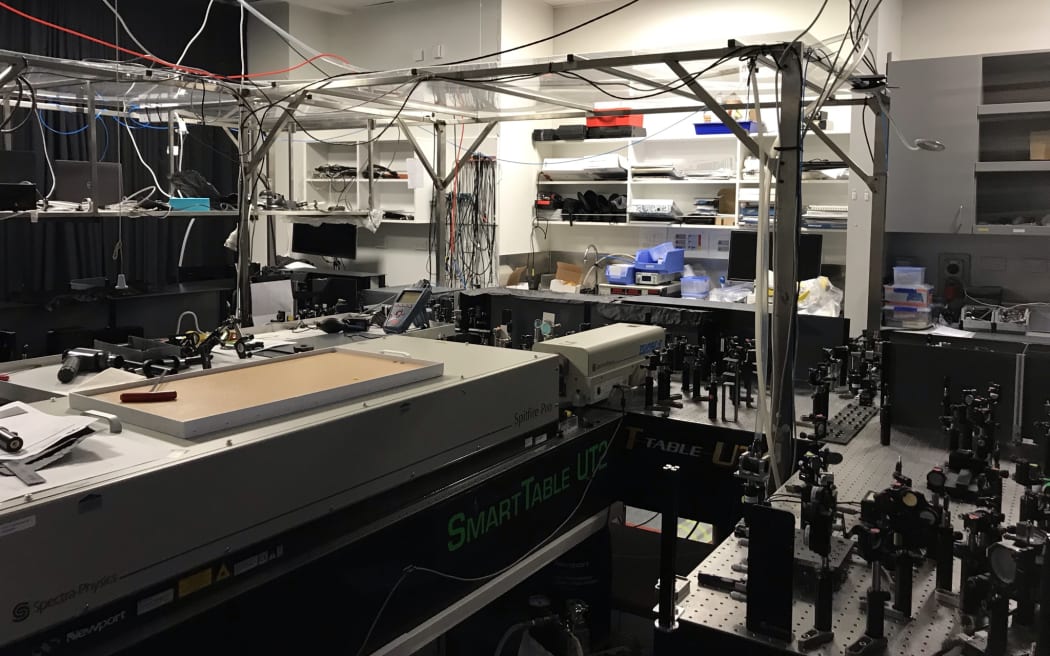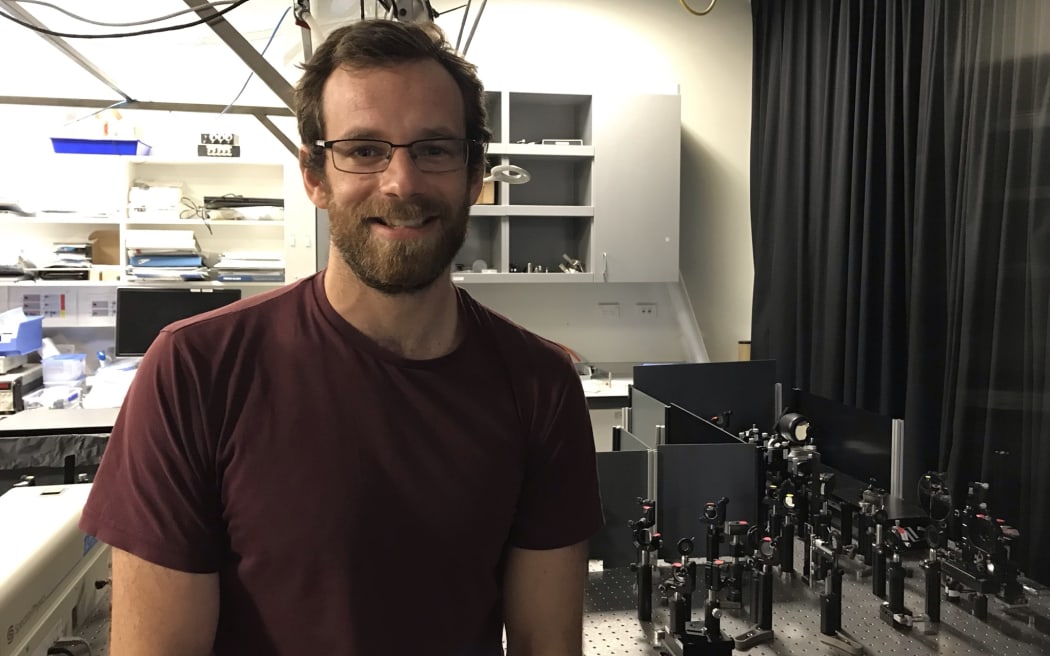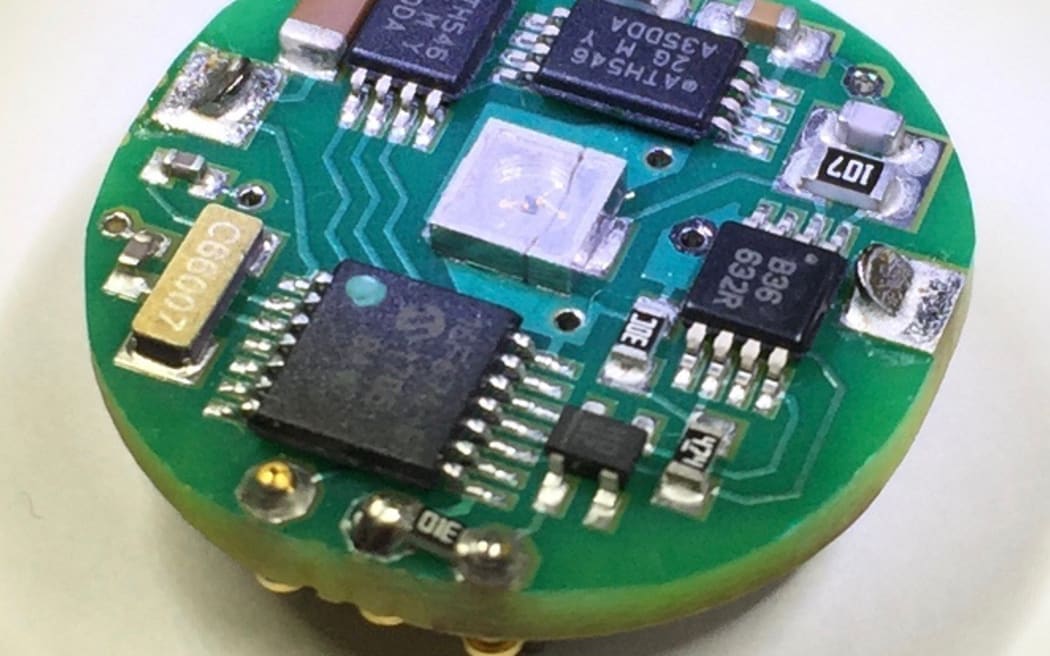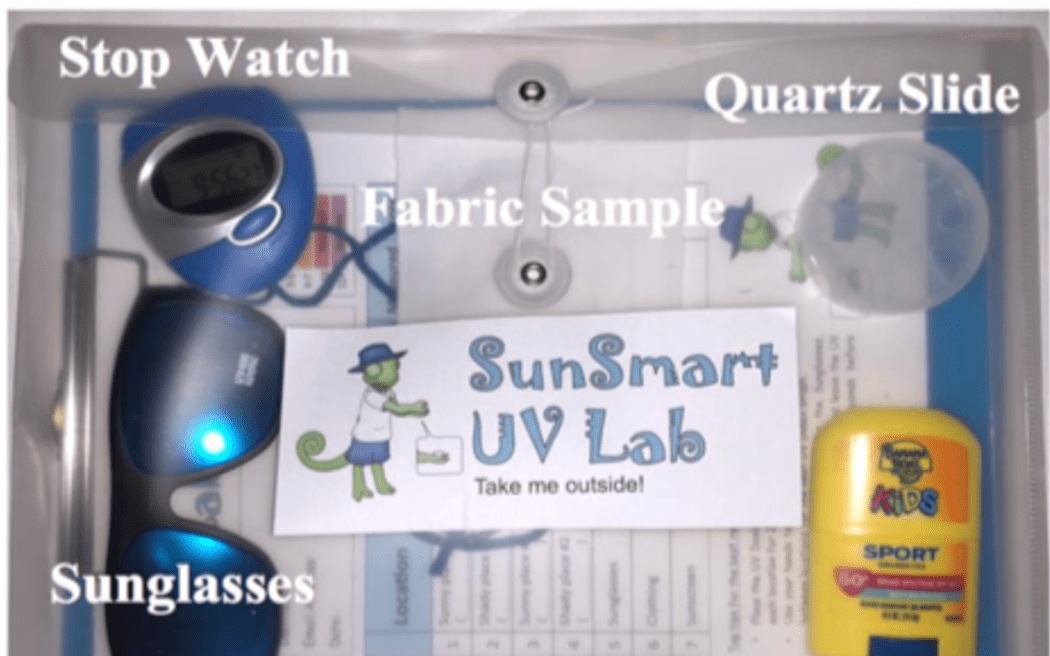The sun, our closest star, is an incandescent ball of plasma powered by nuclear fusion, flinging energy off into space. As Earth’s tilted orbit brings the southern hemisphere more into the sun’s direct glare (summer is coming!), we bring you two stories about harnessing that energy and protecting ourselves from its harm.

NASA's Solar Dynamics Observatory captured an image of the sun "smiling" in 193 angstrom light on 26 October. Photo: Supplied / NASA/GSFC/SDO
Follow Our Changing World on Apple Podcasts, Spotify, Stitcher, iHeartRADIO, Google Podcasts, RadioPublic or wherever you listen to your podcasts.
New solar power materials
A long bench wraps around a laser at the centre of the room. It's crammed full of lenses, mirrors and prisms – the tools of the trade for a scientist investigating the physics of materials, like Dr Michael Price.
Here at the Ultrafast Laser Lab at Victoria University of Wellington’s Kelburn campus, Michael runs tests on different materials, as he tries to find the next breakthrough for better, cheaper and more efficient solar power.

The Ultrafast Laser Lab at Victoria University of Wellington. Photo: Liz Garton / RNZ
The quest to harness the sun’s energy began in the mid-1880s with the discovery of the photovoltaic effect. Today, it has advanced to the large, crystalline silicon solar panels we see on roofs. But there’s a limit to the efficiency of these silicon solar panels, and Michael wants to take it the next step.
“If we could harvest more of the infrared, more of the ultraviolet, that would be one way that we could up that efficiency limit. And some of the materials we're looking at can help with that,” he says.

Dr Michael Price Photo: Liz Garton / RNZ
In particular, Michael and his colleagues have been studying an organic molecule called Y6, which he thinks might be the key for that next breakthrough.
Teaching sun safety
While we can harness the sun’s rays to provide renewable energy, those same rays can be dangerous if they’re directed at our skin instead of solar panels.
Exposure to the sun’s ultraviolet (UV) rays can lead to skin cancer like melanoma. New Zealand’s rates of melanoma are among the highest in the world and in 2020, Aotearoa had the highest death rate from melanoma out of any country.
Already this year, UV level readings are higher than normal, possibly due to the Tongan volcanic eruption in January.
For a nation that loves to get outdoors and soak up the sun, we need to get smarter about our sun safety.

The tiny tech behind an ultraviolet dosimeter. Photo: Martin Allen
Professor Martin Allen from the University of Canterbury has a develoepd a tool that could help: an electronic UV dosimeter (or detector) which measures how intense the UV radiation is and what sort of dose you are receiving.
Martin is keen to see these dosimeters rolled in schools as part of an education programme aimed at making the invisible UV threat more visible and creating life-long sun-safe behaviour.

A SunSmart UV lab kit with a dosimeter to teach kids about sun safety. Photo: Martin Allen
To learn more:
-
Read the Nature paper referred to in this episode.
-
Listen to ‘Green cities of the future – what we can expect in 2050’ to learn more about MacDiarmid Institute research into technology that will reduce our environmental impacts.
-
Visit the UV research website to learn more about dosimeters or read about Martin’s work using them in sun-smart education programmes.

